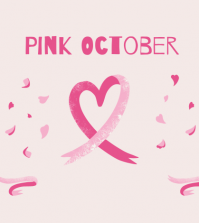- Finding Unshakable Power in a World That Wants to Pull Us ApartPosted 2 weeks ago
- What could a Donald Trump presidency mean for abortion rights?Posted 2 weeks ago
- Financial Empowerment: The Game-Changer for Women in Relationships and BeyondPosted 2 months ago
- Mental Health and Wellbeing Tips During and After PregnancyPosted 2 months ago
- Fall Renewal: Step outside your Comfort Zone & Experience Vibrant ChangePosted 2 months ago
- Women Entrepreneurs Need Support SystemsPosted 2 months ago
Simple Steps to Lower Your Breast Cancer Risk

New research adds to the growing body of knowledge about actions women can take to lower their breast cancer risk. The new report is an update of previous research, adding results of 81 new studies to the findings of more than 800 that have followed women in the United States and around the world to see who develops breast cancer and who doesn’t.
The study provides good news for women in the form of steps they can take to protect themselves, such as:
1. Be as lean as possible without being underweight. A healthy body mass index is defined as being above 18.5 but no greater than 25. Women closer to the lower end of the healthy weight range have the most protection from breast cancer.
2. Exercise for at least 30 minutes a day. If you can’t do that, at least do some. Some activity is better than none, but the more, the better.
3. Limit alcohol consumption. If you drink at all, limit your intake to one serving a day.
4. Breast-feed. New mothers should breast-feed exclusively for up to six months — the evidence is convincing that mothers who breast-feed reduce their risk for breast cancer.
Further, and surprisingly, increased screenings may not be the most effective option for women, and even men to lower their risks.
Separate studies suggest that some cancer tests can result in false positives. Two studies — one looking at prostate cancer and the other at breast cancer — show that increased screening brings false positives and the costs of emotional anguish and sometimes unnecessary treatment.
While the prostate cancer study and the breast cancer study looked at two different cancers in two different populations, both studies came to similar conclusions; a lot of patients are receiving unnecessary treatments. In the breast cancer screening study, women were given a clinical breast exam in addition to mammography. For every additional cancer found there were 55 false positives. According to the prostate cancer study’s authors, between the years 1986 and 2005, 1 million men were incorrectly diagnosed with prostate cancer.
Article Source: http://articles.mercola.com/sites/articles/archive/2009/10/10/simple-steps-to-lower-your-breast-cancer-risk.aspx






